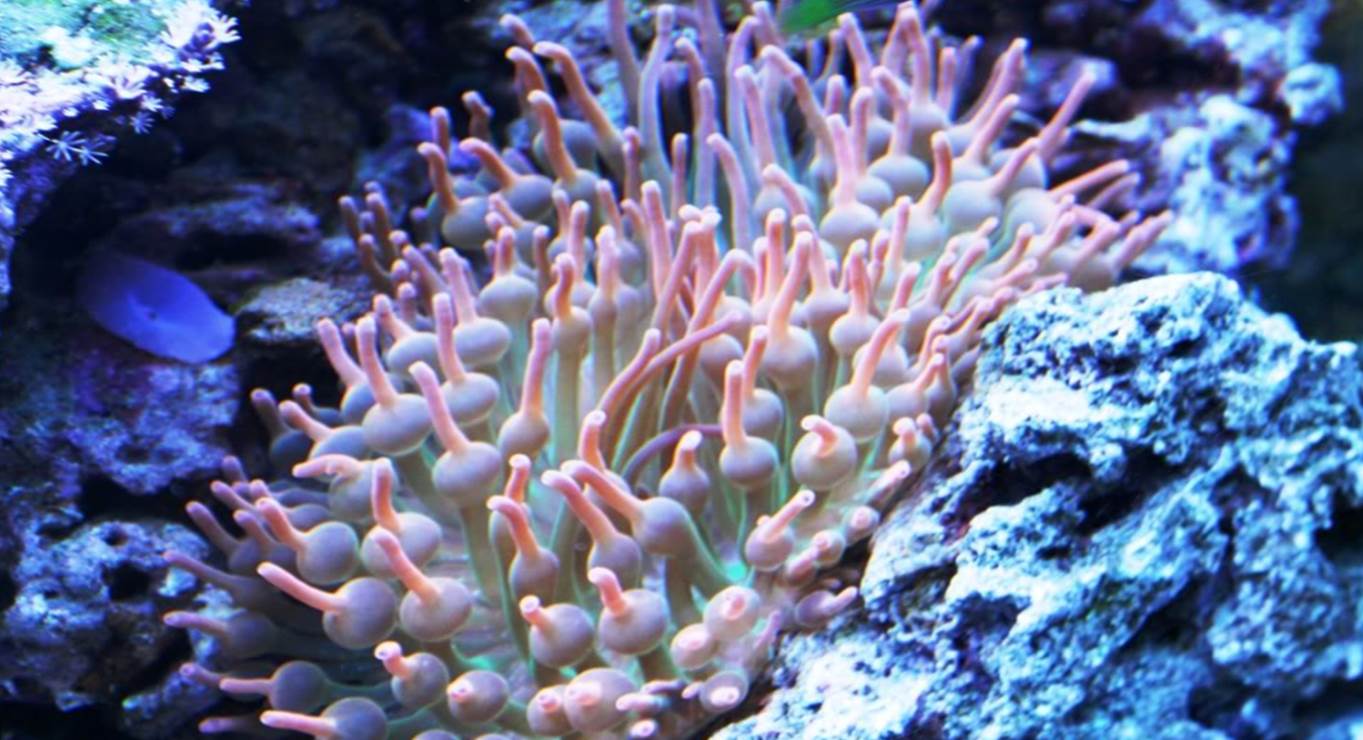
Bubble Tip Anemone
Common Name: Bubble Tip Anemone, BTA, Rose Bubble Tip Anemone, RBTA
Scientific Name: Entacmaea Quadricolor
Reef Safe: Yes
Flow: Moderate
Lighting: High
Care Level: Moderate
Max Size: 20 to 24 inches
Appearance:
The bubble tip anemone is among the most common anemones kept in the hobby as they are among the easier to keep anemones. The most common is the red or green bubble tip, however you can get color variations with hints of blue to orange colors as well. They can be easily identified by the longer tentacles (1 to 2 inches in length) with a “bubble” structure near the end of the tentacle. The size and shape of the bubble structure on the end of the tentacle will vary between different BTAs from very large to almost nonexistent. The below pictures are of a few bubble tip anemones that I have kept.
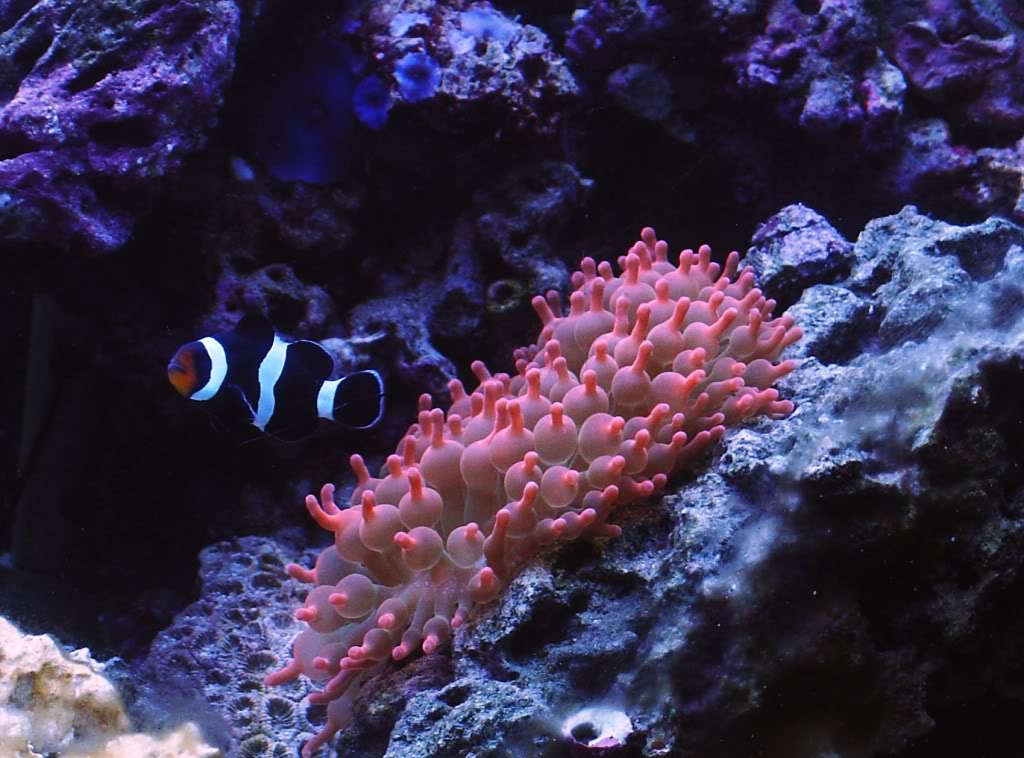
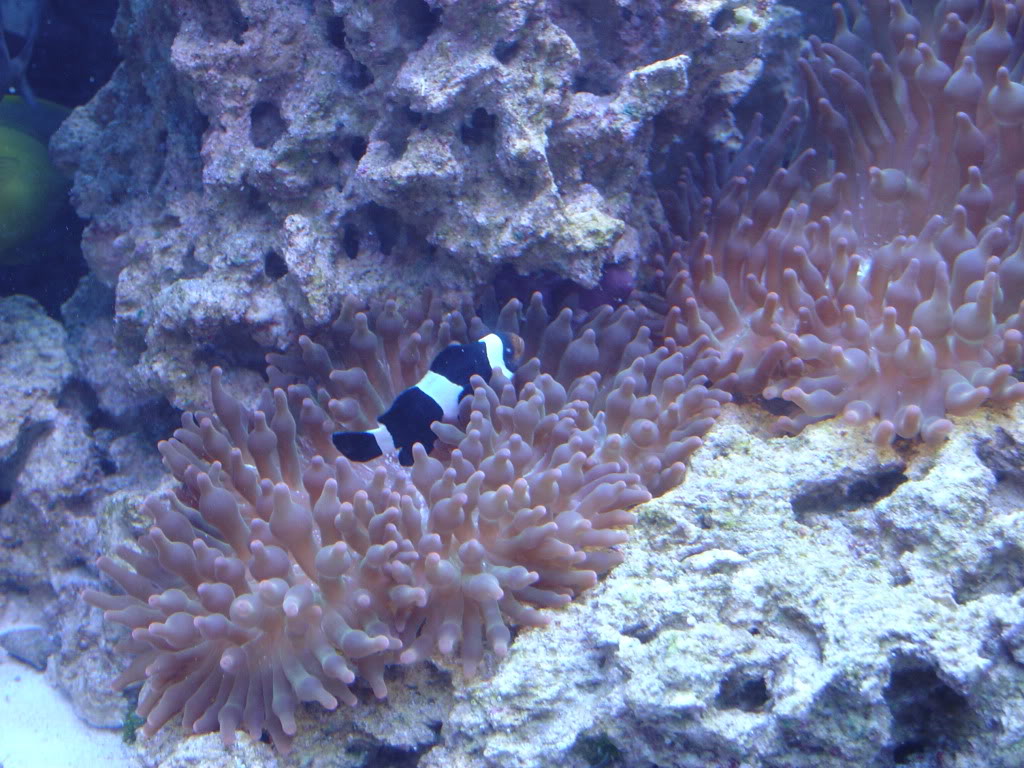
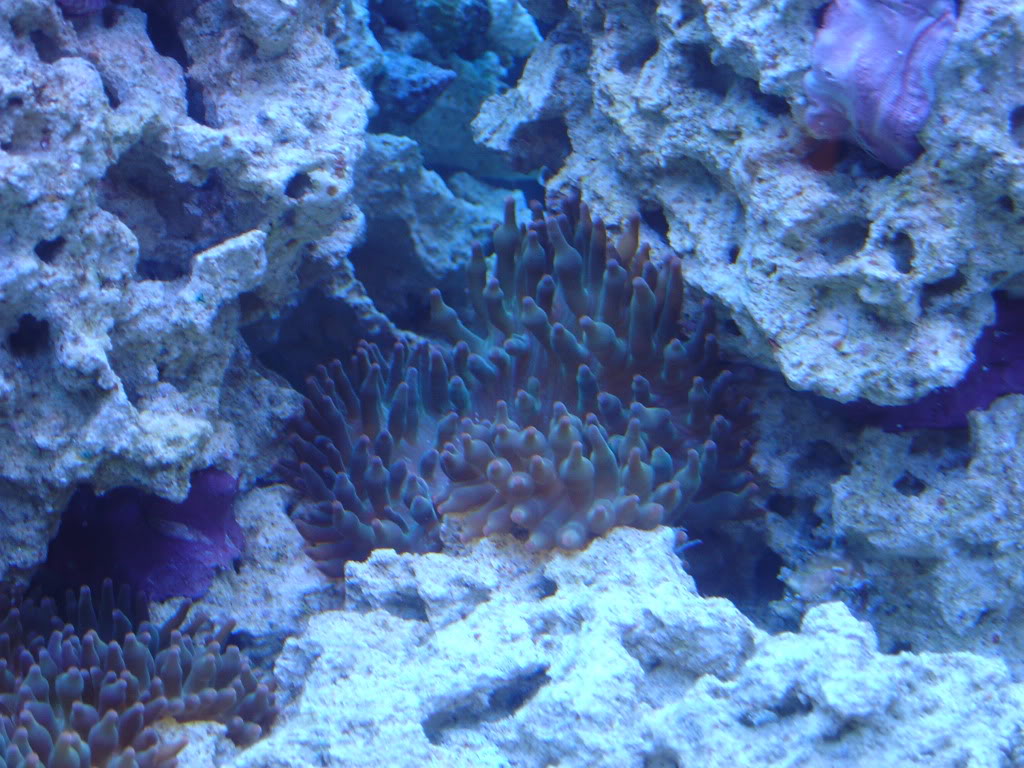
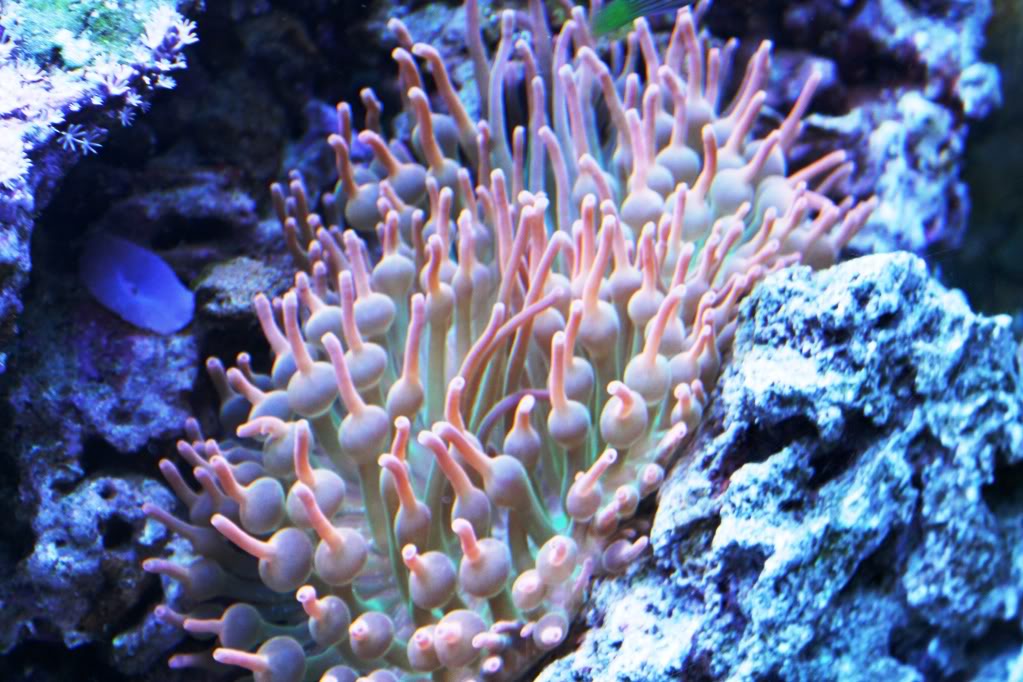
Temperament
When compared to other anemones, the bubble tip anemone would be the least likely to eat any of your fish or invertebrates. By anemone standards, that makes the bubble tip anemone one of the more peaceful anemones. However, the bubble tip anemone is the most likely to move around in your aquarium should it become unhappy with something in its environment or a very slight change in its environment. This will create problems as the anemone can sting corals as it moves damaging or killing the corals it stings.
Environment
These anemones can get to be a little over one foot across which is why I would suggest a tank size of no less than 30 gallons for bubble tip anemones. In my experience, they are among the easier anemones to keep and likely the hardiest of the anemones. Bubble tip anemones typically like to attach to the rocks in a spot where they can attach their boot into a crevasse in the rock and protect their boot. They like moderate flow and high lighting conditions.
As with all anemones, they need to be placed in a stable and matured aquarium. I would only recommend then to hobbyists who are at least somewhat experienced. In addition, extreme care should be taken if you are going to keep a bubble tip anemone in an aquarium with a different type of anemone.
Recommended Water Conditions:
I would refer you to the below article for the typical water conditions that a bubble tip anemone will do best in. As a more difficult invertebrate to keep, the bubble tip anemone will also need both good and very stable water parameters for long term success.
https://www.reefaquarium.com/2013/the-basics-of-marine-aquarium-water-parameters/
Diet
While bubble tip anemones can thrive under the correct level of lighting (providing all other requirements are met) they can still benefit from the occasional (weekly) feeding of some meeting foods. If you see a bubble tip anemone with its tentacles stretched out, they are using them like sweeper tentacles when hungry. This is the anemone’s method of capturing food in the wild. After grabbing a meal, the tentacles will shorten again and the bubble tips return. You must be careful to offer only high quality foods as anemones (in general) can suffer from bacterial infections when offered poor quality foods. The below link can help you with that as well.
https://www.reefaquarium.com/2012/feeding-high-quality-froozen-foods/
Reproduction
It is also very common for bubble tip anemones to reproduce in the home aquarium when kept in ideal conditions. They can produce sexually by spawning, or much more commonly asexually by splitting. I had started off with one bubble tip anemone in one of my tanks which ended up as 5 bubble tip anemones one year later. It seemed like once the anemone would get to close its maximum size, it would split and one half would move around the tank until it found a spot it liked.
Fragging
In my opinion, you should not frag anemones as they are invertebrates and not corals. Although you can find information on line posted by people who claim to have successfully fragged anemones, I would encourage you to read through the below links before considering to attempt fragging an anemone.
http://www.wifeofnerd.com/images/Embryonic%20development%20of%20E.%20quad%20H.%20crisp.pdf
http://www.wifeofnerd.com/images/Broadcast%20spawning%20of%20E.%20quad%20H.%20crisp.pdf
A Word of Caution
Handle this invertebrate, and all anemones, with care. They have the ability to sting with their tentacles. These stings can cause skin irritations or serious allergic reactions. Always wear protective rubber gloves when handling anemones
Clownfish
If you would like clown fish, consider the below list of some the more common clown fish that have been known to readily host in bubble tip anemones.
Amphiprion Clarkii
Amphiprion Ocellaris, ocellaris clown fish (all color variations)
Amphiprion Bicinctus, or two-band clown
Amphiprion Frenatus, or tomato clown
Amphiprion. Melanopus, or cinnamon clown
For some more detailed information, I would refer you to the below link
Hi Cliff
I’m new to this and have a 100g tank into which I have introduced many types of corals…most of which are doing really well
I have a yellow and purple tang, a couple of cleaner wrasse, a couple of Bangai cardinals and a very timid fox face
I love the tangs and ideally wanted to add more….understanding that I would have to move them on when they get too large
What would you advise